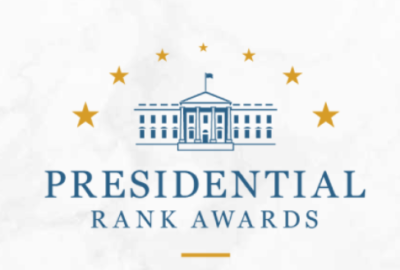This senior executive has ensured U.S. wildlife species have room to thrive
For fish and wildlife to thrive in the United States, they need space. The Federal Drive with Tom Temin spoke to someone who has spent a career helping secure woods...
Best listening experience is on Chrome, Firefox or Safari. Subscribe to Federal Drive’s daily audio interviews on Apple Podcasts or PodcastOne.
For fish and wildlife to thrive in the United States, they need space. The Federal Drive with Tom Temin spoke to someone who has spent a career helping secure woods and grasslands that support conservation. Now he’s a recipient of a Presidential Rank Award, one in a series of interviews of PRA winners, the deputy director for program management and policy at the Fish and Wildlife Service, Steve Guertin.
Interview transcript:
Tom Temin: Mr. Guertin. Good to have you on.
Steve Guertin: Thank you, Tom, appreciate the invitation.
Tom Temin:
And congratulations on the PRA. Tell us first of all, just Fish and Wildlife Service has a pretty big footprint in conservation and helping people like to hike and fish and hunt and so forth. Other agencies have animal concerns just fit the FWS into the general federal scheme of the animal related agencies.Steve Guertin: Sure, so we’re land management agency like the U.S. Forest Service, the BLM (Bureau of Land Management) and the National Park Service, in that we manage our beautiful National Wildlife Refuge System, a diverse network of lands and waters that are dedicated to conserving our rich fish and wildlife heritage. And we’ve got about 568 national wildlife refuges, five green national monuments, and those include 95 million acres of land and about 760 million acres of submerged lands and waters, much of that water, of course, in the Pacific. These range from the National Elk Refuge in Jackson, Wyoming to local refuges here like Patuxent or Blackwater over in Maryland, and we support a lot of wildlife watching and fishing, hunting and environmental education. We’re also a regulatory agency and implement important environmental statutes like the Endangered Species Act and the Migratory Bird Protection Act. We’re a big provider of technical assistance and permitting programs. And we also administer a lot of conservation grant programs totaling over $1.5 billion. I loved your question about the animal architecture. We work very closely with counterpart agencies like NOAA, National Marine Fishery Service, in very simplistic terms, they focus on the salt water, we focus on the freshwater but we overlap along the coast and tidal rivers with a lot of anatomist fishery species and we do some work on responsibilities and also the lead for marine mammals.
Tom Temin: All right, so pretty big portfolio and of those 95 million acres and 568 refuges, do they tend to border say, land operated by the National Park Service, or BLM? Or do you overlap any of the land? Or is it just simply, they’re where they are, and you are where you are?
Steve Guertin: Here on the eastern part of the country, we’re probably more focused on wetlands and riverine habitats, out west, we would abut a lot the National Forest, National Parks. We try to do those, knit together all these conservation estate with private landowners and others to focus on larger landscape level conservation goals.
Tom Temin: And over the years you have helped secure and add to the nation’s refuges and so forth. What’s involved what are the challenges dealing with landowners to convince them that this should be a refuge? And how does the whole process work?
Steve Guertin: Sure, we spend a lot of time working on landscapes conservation, and the first part is just developing a shared vision for the future of that landscape and then try to knit together people with similar objectives. We do a lot of understanding of what is driving people on landscape. You know, we’re focused certainly on the wildlife management and fisheries resources. We have folks out there ranching, timber product industry and other economic drivers. And they’re passionate conservationists as well. And so we have a very powerful tool in the form of conservation easements with voluntary, willing landowners who want to enter into a partnership with us. We allow them to continue their ongoing agricultural or forest product work, whatever they’re doing and manage it in a way to benefit wildlife. We go through a very detailed and robust public scoping and planning process, NEPA compliance, all the regulatory hoops, of course there. And what’s impressed me most about this work is the people I’ve met out there, and their vision and their passion for conservation, and the great relationships we’ve been able to carve out groups like Partnerscapes, it’s a nationwide leadership team of private landowners who want to work with us on wildlife conservation, and we want to work with them to keep their business intact.
Tom Temin: Are fishing and hunting allowed in some of the refuges? Because if it is private land and there’s easements, that might be part of their agreement that well, we don’t want hunting and fishing on the land. So how does that work? And are there areas that you operate that people can do these types of sports?
Steve Guertin: Sure, in very general terms, we don’t require access onto an easement, that’s left to the discretion of the private landowner. Some of them are welcoming of it. Some of them are not. In general terms with the federal estate, the National Wildlife Refuge System in and of itself, we have a very robust public access program for hunting, fishing, outdoor recreation, wildlife watching and things like that and go through a very formal process to open up those refuges and support public access.
Tom Temin: We’re speaking with Steve Guertin. He’s director for program management and policy at the Fish and Wildlife Service and recipient of one of this year’s Presidential Rank Awards. And with respect to the maintenance of the land. Now, when you talk to the National Park Service, you know, famously they have billions and billions of dollars of backlog of maintenance of lands and facilities. And there’s been some legislation passed to funnel BLM money into the National Park Service. What about the refuges of the Fish and Wildlife Service? Do they require maintenance if they’re just wild lands? And do you have a backlog for the maintenance that’s required?
Steve Guertin: Sure, we’ve got about a 1.3 billion backlog in roads, visitor centers, workspaces, water impoundments, dikes and levees, and then our National Fish Hatchery system as well, which is actually a lot of plumbing and tanks for propagation purposes. Some of these hatcheries over 100 years old, and some other investments date from the 1950s and 60s. So we do a lot of work with Department of Interior, OMB (Office of Management and Budget) and the Hill to get results from programs like the Great American Outdoors Act, through our annual appropriations process, all with the goal of providing a quality experience for visitors onto the public estate, in our case, the refuge system.
Tom Temin: And that leads to the issue of appropriations and the fact that you are a regular testifier before Congress, and you generally find that you get a good reception up there?
Steve Guertin: We put a lot of effort into building trust and confidence with our authorizing and appropriations committee members and staff, as well as the individual members and senators. You know, a lot of our issues, particularly regulatory determinations, or land use planning can get a lot of attention up on the Hill. And so we try to be proactive, responsive and develop clear channels of communications. And always try to keep those lines open with both sides of the aisle. And as you mentioned, I do testify a lot. I’ve done about two dozen hearings the last few years was just up on the Hill,yesterday, as a matter of fact.
Tom Temin: All right, and you personally, are you an outdoorsman, yourself?
Steve Guertin: Oh, yes. Family hiking, camping, fishing, love getting into the outdoors.
Tom Temin: And by the way, are you a fly fisherman or a rod and reel type guy?
Steve Guertin: I’ll fish wherever I can go with whatever works. My problem? Isn’t the fishing itself. It’s always been the catching part of the equation, doing better.
Tom Temin: Well, don’t we all? And how did you get into this type of work of all possible federal careers?
Steve Guertin: Just very inspired, as a young person, I was very active in the scouts. So I had the opportunity to do a lot of camping and hiking and just followed my passion. Very inspired by critical thinkers before me like Aldo Leopold and some of his essays on conservation. And very appreciative of working for an agency with a lot of like-minded colleagues, we all have a lot of passion for what we do. Pilots, biologists, budget analysts, botanists, law enforcement officers, we’re all united in our sincere belief to make sure there are official wildlife for the future and for future generations to enjoy here in the U.S.
Tom Temin: And when you have a title like program management and policy, that doesn’t sound like tramping through the woods and looking at trout in the eyeball. But you try to find time to do that, though, even in the context of a D.C. and lobbying and on the Hill type of job?
Steve Guertin: Yes, certainly, once we are released from some of the COVID prohibitions and allowed to travel, we do get the opportunity to get out to the field, visit with our folks with our partners, get out on those landscapes and really see what we’re trying to accomplish with our mission.
Tom Temin: A couple of detailed questions. Do you deal with the feral hog problem in the United States?
Steve Guertin: Yes, we work with a lot of the partners but mostly be in the state fishing game agencies or some of the USDA programs that work on feral hogs. We’d be involved if they’re on some of our refuges. There’s some pretty pronounced issues out in states like Hawaii and Louisiana, for example. And the concern for us is they get in and root around a lot of vegetation, destroy the habitat and compete with the species. We’re more focused on, in many cases, endangered species.
Tom Temin: And do you have a personal refuge you like the most?
Steve Guertin: I like any refuge that I can get out to, but I do enjoy some of our local ones like Blackwater Refuge. I really enjoy the big ones out west, National Elk, Charles M. Russell. And I think an all time favorite for me would be Kenai National Wildlife Refuge up in Alaska.
Tom Temin: Steve Guertin is director for program management and policy at the Fish and Wildlife Service. Thanks so much for joining me.
Steve Guertin: Thank you so much, and thanks for all you do to talk about the role of federal employees.
Copyright © 2025 Federal News Network. All rights reserved. This website is not intended for users located within the European Economic Area.
Tom Temin is host of the Federal Drive and has been providing insight on federal technology and management issues for more than 30 years.
Follow @tteminWFED






